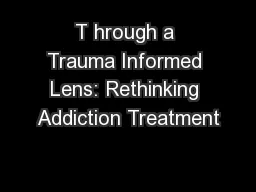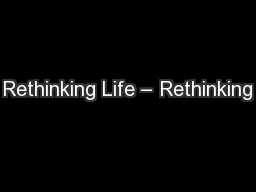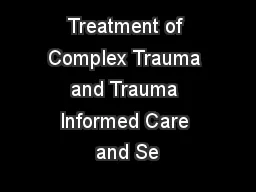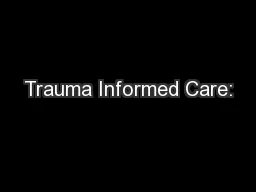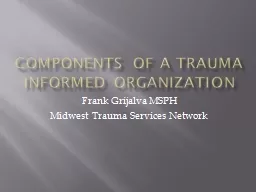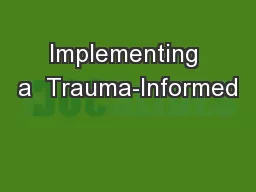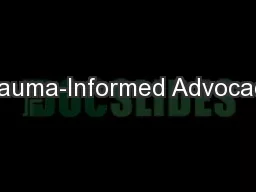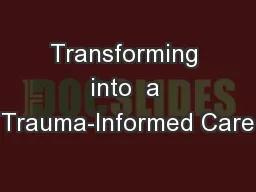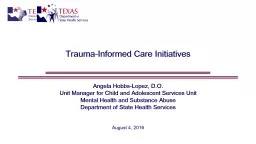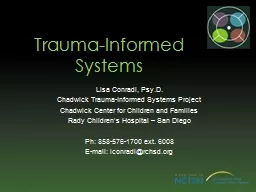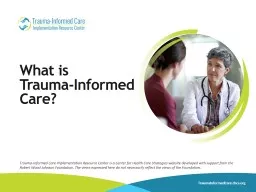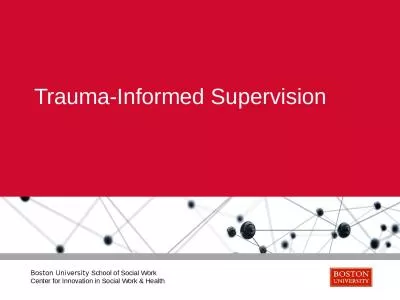PPT-T hrough a Trauma Informed Lens: Rethinking Addiction Treatment
Author : mitsue-stanley | Published Date : 2018-10-14
Dr Debbie Ruisard DSW LCSW LCADC druisardlcswgmailcom One must not look hard to see that we are losing the battle against addiction Harvard Psychiatrist
Presentation Embed Code
Download Presentation
Download Presentation The PPT/PDF document "T hrough a Trauma Informed Lens: Rethink..." is the property of its rightful owner. Permission is granted to download and print the materials on this website for personal, non-commercial use only, and to display it on your personal computer provided you do not modify the materials and that you retain all copyright notices contained in the materials. By downloading content from our website, you accept the terms of this agreement.
T hrough a Trauma Informed Lens: Rethinking Addiction Treatment: Transcript
Download Rules Of Document
"T hrough a Trauma Informed Lens: Rethinking Addiction Treatment"The content belongs to its owner. You may download and print it for personal use, without modification, and keep all copyright notices. By downloading, you agree to these terms.
Related Documents

